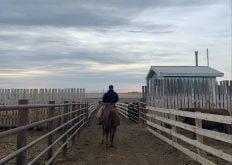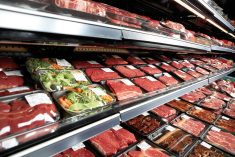Many consider financial literacy to be a basic life skill. And further, one that is not always covered in traditional school settings. As ranchers and farmers, does this gap extend into our knowledge base? Certainly those that specialize and like “numbers” have a good grasp, but beyond that, how can we improve ag financial literacy and business management?
The importance increases when we have to manage through something like COVID-19. As Dr. David Kohl, professor emeritus from Virginia Tech, puts it, the black swan has landed. A black swan is an event that “comes as a surprise, has a major effect and is often inappropriately rationalized after the fact with the benefit of hindsight,” according to Wikipedia. The term is based on an ancient saying that presumed black swans did not exist.
Heather Watson, executive director of Farm Management Canada, says their latest research on understanding the drivers and barriers to adopting farm business management practices shows that only a third of Canada’s farmers follow a financial plan and budget objectives (Dollars and Sense Study Update, 2020).

“This has remained steady over the last five years, while use of other financial tools has actually declined, including the ability to read and use financial statements (63 per cent, down from 73 per cent in 2015), decision-making using cost of production (48 per cent, down from 50 per cent in 2015), market and price risk management (35 per cent, down from 36 per cent in 2015) and overall financial risk management (43 per cent, down from 51 per cent in 2015),” she says.
Watson adds that having a basic financial understanding is important.
“Simply put, you can’t manage what you can’t measure. Our day-to-day decision-making is limited to the information available to us. If farmers and ranchers do not know their financial position, it becomes very easy to make decisions that have a negative impact on the immediate and future success of the farm.”
Read Also

Treaty Land Sharing Network expands reach in Saskatchewan and Alberta
The Treaty Land Sharing Network, which connects land holders with First Nations and Metis people, has expanded since it began in 2018
On a recent podcast of the Texas and Southwest Cattle Raisers Association, ag economist Dr. Stan Bevers stresses the importance of good financial planning and accounting systems.
“In the U.S., 30 years ago it cost roughly $1 per day to keep a cow for a year, or $365. Today that is $975, and calves are currently $850-$900.”
2019 figures from Manitoba Agriculture, found in 2020 Cost of Production: Beef Cow-Calf, have the direct costs per cow at $1,058.57 and adding fixed costs and labour the total is $1,469.10. The average return based on a 575-pound calf at $192.83 equals $1,053.33.
Of course everyone’s individual numbers are different, but the above examples further support the importance of knowing what those numbers are.
Bevers also stresses the importance of doing an enterprise analysis, where each enterprise is looked at separately to determine the contribution to overhead.
Watson echoes this sentiment.
“It’s also important to understand the financial performance of each enterprise within the farm, to invest in those ventures that are most profitable, and make critical decisions for those areas that may be drawing down profit and long-term success.”
A challenge in agriculture is often cash flow. It is valuable to plan this out ahead of time with projections and to monitor it monthly or even quarterly. Technology and spreadsheets are a great help with this monitoring. You can go through some “what-if” scenarios to help project what happens with fluctuations in the market. This helps us to make educated decisions, not guesses.
Who is the best person in the operation to be looking after the finances? It is not always a skill set or interest. Or should we be outsourcing it? It’s equally important to monitor those projections once they’ve been made and share that information with the team.
“We like to say, ‘Do your best, and hire the rest.’ Trying to be a jack-of-all-trades for the farm is just not realistic. Each member of the farm team has different talents and it’s important to determine the strengths and passions of the members of your farm team so you can determine where you might need a little help,” says Watson.
Dr. Kohl stresses keeping track of expenses during a black swan event. Ask if an expenditure is a want or a need. He also advises to keep emotionally healthy. And “Never equate your self-worth with your net worth.”
Seven practices that yield financial success
Heather Watson, executive director of Farm Management Canada, says that their research has revealed seven practices driving farm financial success. Those practices include:
- A commitment to ongoing skills development and lifelong learning.
- Business decisions made using accurate financial data.
- Seeking the help of business advisors and consultants.
- Having a written business plan, following it, reviewing it annually.
- Knowing/monitoring your cost of production and what it means for profit.
- Assessing risks and having a plan to manage and mitigate risk.
- Using a budget and financial plan to monitor financial position and options. “As you can see, the vast majority of these practices include financial management, planning ahead and seeking to increase knowledge,” concludes Watson.
13 points that underpin farm financial literacy
How do you know if you’re on the right financial track with your operation? Heather Watson, executive director of Farm Management Canada, outlines the points that build a basic financial understanding on the farm:
- Are you using a recognized and robust accounting system for your farm?
- Is data entered in a timely manner by a qualified person?
- Is your data ready for review and analysis at a moment’s notice?
- Are you able to analyze financial trends(past)and what-if scenarios (future), so you can confront change with confidence?
- Are you using this data when making business decisions for your farm?
- While you may know if you’re making money, do you know what’s making you money and what’s not?
- How many distinct businesses are you running?
- Are you benchmarking year-over-year and/or against other operations to identify opportunities for improvement
- Have you prepared a budget for your farm?
- Have you prepared a budget for the distinct business entities within your farm?
- Do you review your budget and financial plan when making business decisions?
- While assets are important for access to capital, cash is still king to weather the storm or seize opportunity.
- Do you monitor your cash flow and maintain sufficient liquidity and working capital to remain resilient and seize new opportunities?
















